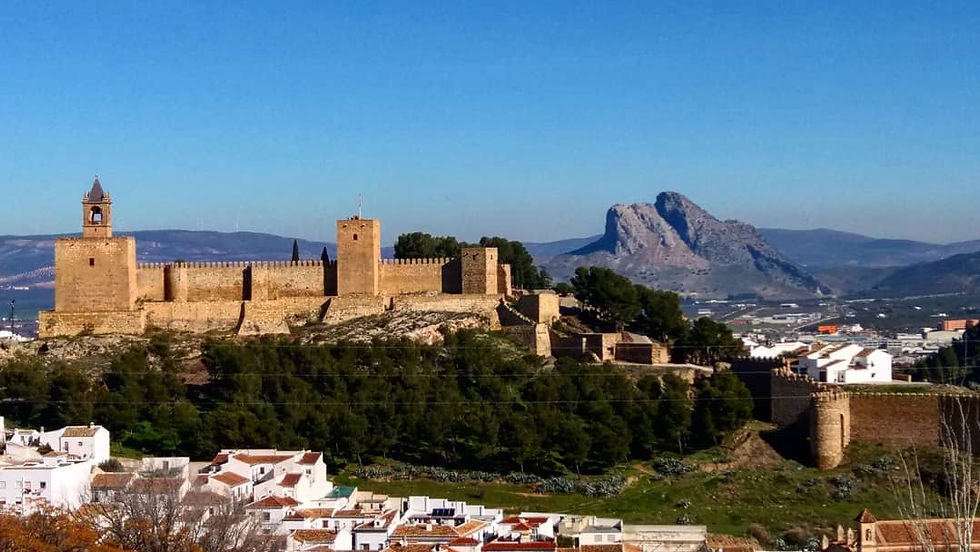Spain: Antequera
- Matthew P G

- May 27, 2022
- 3 min read


Alcazaba, Antequera, Spain. January 2018
The Heart of Andalucia
Even southern Spain in January is cold, and Antequera is not on the coast and at a high elevation. My stay there was full of short, sunny days and extremely cold morning departures for day trips. Antequera is the transportation crossroads of southern Spain with roads and rails leading to Malaga, Cordoba, Granada, Seville, and Algeciras. It was a great place to be based for a week. Most unfortunately, the town's high speed rail station wasn't yet finished so it was not of much use to me except for heading to Granada [see: Alhambra]. Otherwise, I had to take a bus out to the Santa Ana station far out of town. It was a minor inconvenience which was made up for by the charm of the town.
The best part of the stay was the Hotel El Meson Numero Uno. Centrally located in the small city, it came highly rated on travel sites. I was not disappointed. The bar/restaurant on the first floor was very local and I had red wine and snacks there every evening after a hard day of touristing. During the few lunches there, I discovered Porra, a cold tomato soup made with leftover bread. Antequera was famous for it and I absolutely fell in love its refreshing tartness. Nothing beats staying at a family-run hotel with great food where one feels welcome. I would return to Antequera just to hang out at that hotel for a few days and sit at the bar and people watch.
Just down the street was the castle hill with its old Moorish bastion. Antequera was one of those "final stand" places in the Reconquista since it was such a crucial gateway to different parts of the region. Ultimately, it fell and its Muslim population all fled to Granada [see: historical reckoning]. The view from the Alcazaba (castle) was stunning and the rock formation of El Peñon De Los Enamorados dominated the vista to the east.
The mountain was named after a legend from the local oral tradition. The most well-known version of the legend says that two young Moorish lovers from rival clans, a young man from Antequera and girl from nearby Archidona, threw themselves from the rock while being pursued by the girl's father and his men. This romantic legend was later adapted by Robert Southey. In his Laila and Manuel the lovers were a Muslim girl and her father's Christian slave.
Christopher Columbus knew of this name. His chronicler, Bartolome de Casas, copied a log entry from Oct 29, 1492 in which Columbus describes what he saw 8 days earlier in Cuba, "Remarking on the position of the river and port, to which he gave the name San Salvador, he described its mountains as lofty and beautiful, like the peña de las enamoradas ... ".
The mountain is also popularly known as "Montaña del Indio" because it looks like the head of an American Indian when seen from certain angles.
(Wikipedia)
Antequera was near El Torcal, a national park with bizarrely eroded limestone that has been used in several films over the years. Additionally, on the side of town facing El Peñon De Los Enamorados were Bronze Age tombs (Dolmens), the oldest of their type in Europe. I really fell in love with the city in its off-season loneliness and early morning empty streets. Since my visit, the high speed line to Granada has been completed, so now it is possible to take the train from Madrid Atocha station directly to the small city station. That line is projected to continue onto Seville (under construction) in the future. After that, little Antequera will truly regain its crown as the "heart of Andalucia" as it used to be known in its glory days.


Comments